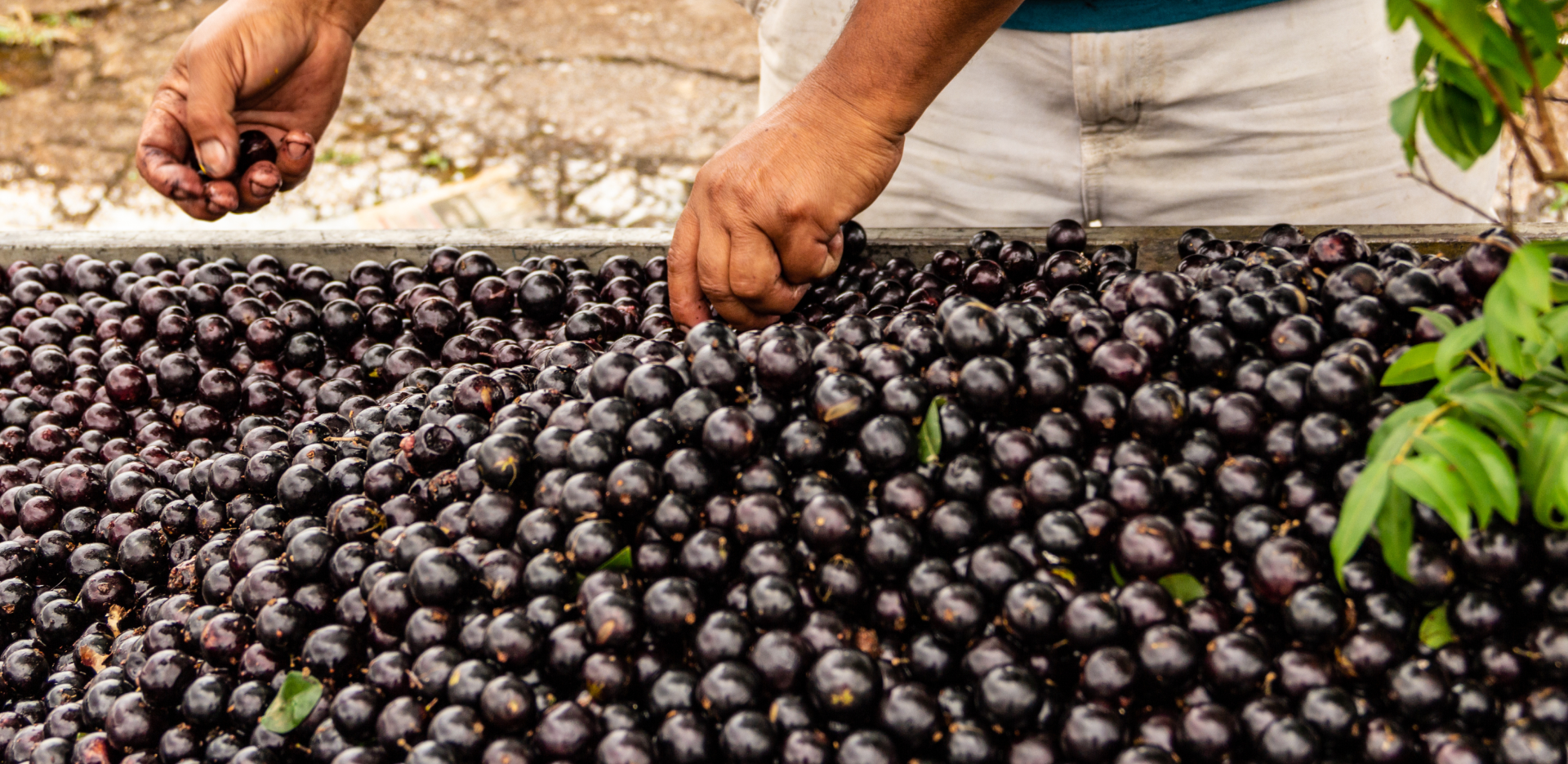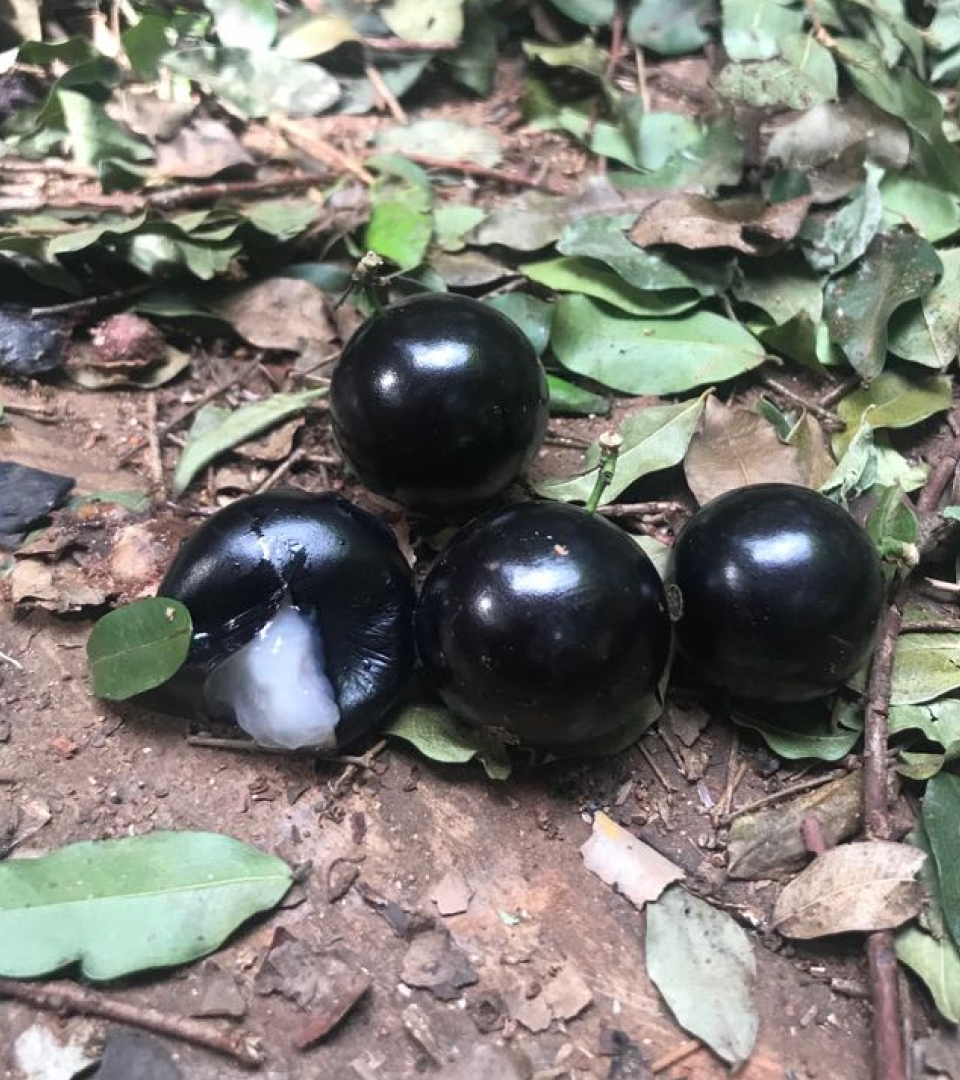
UNEQUIVOCALLY BRAZILIAN
Jabuticaba is native to the indigenous Central and Southern parts of Brazil. The thick-skinned, dark purple berries have an extremely short shelf life and begin to ferment three to four days after being picked — making them difficult to export anywhere else and highly desirable!
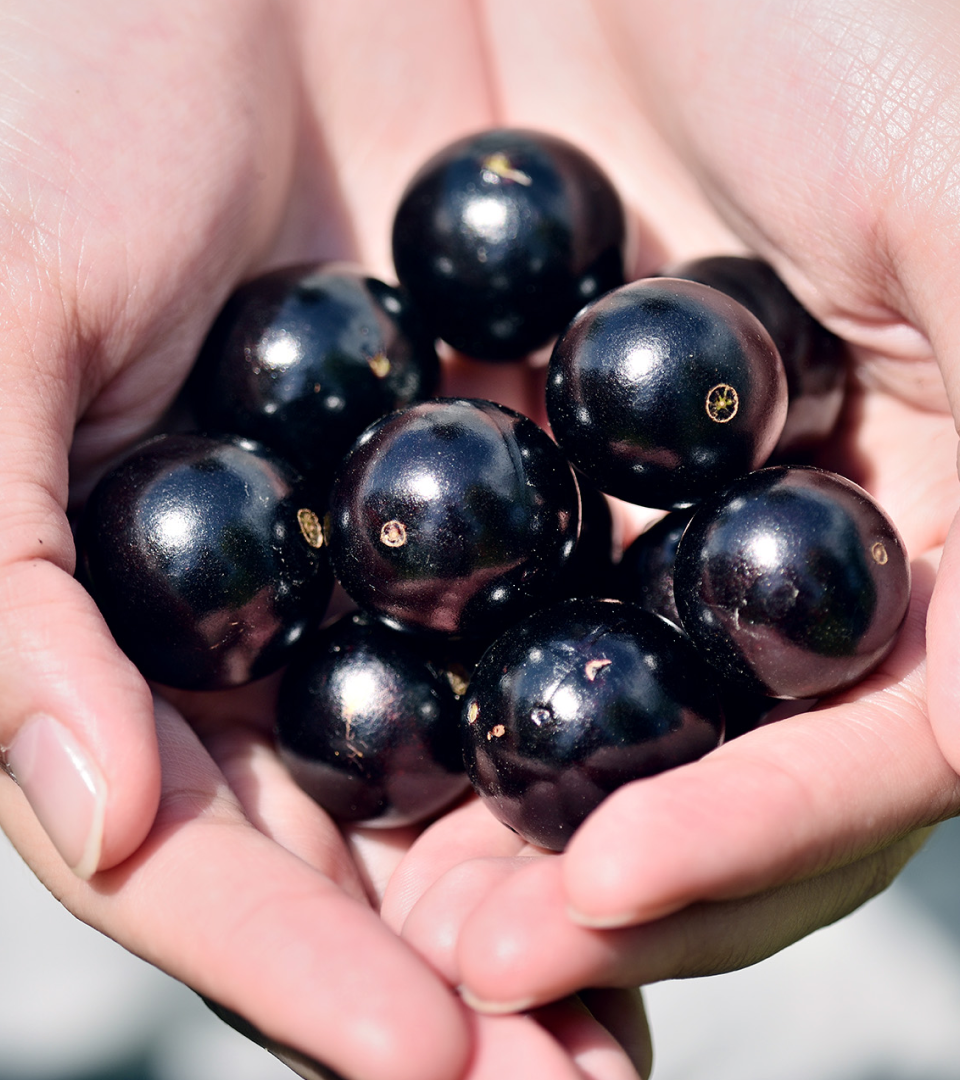
UNUSUAL AND RARE
Getting hold of these berries is no easy feat. They’re native to three states — Minas Gerais, Goiás and São Paulo — and they’re in season for just a few weeks of the year. The way they grow is particularly striking; you’ll find them smothering the tree trunk rather than appearing among the leaves. The jabuticaba tree only thrives in a subtropical climate, and in rich, well-drained soil. Once planted, the tree can take anywhere between six and eight years to bear fruit. This, combined with their short shelf life, makes the berries veritable gold dust outside Brazil.
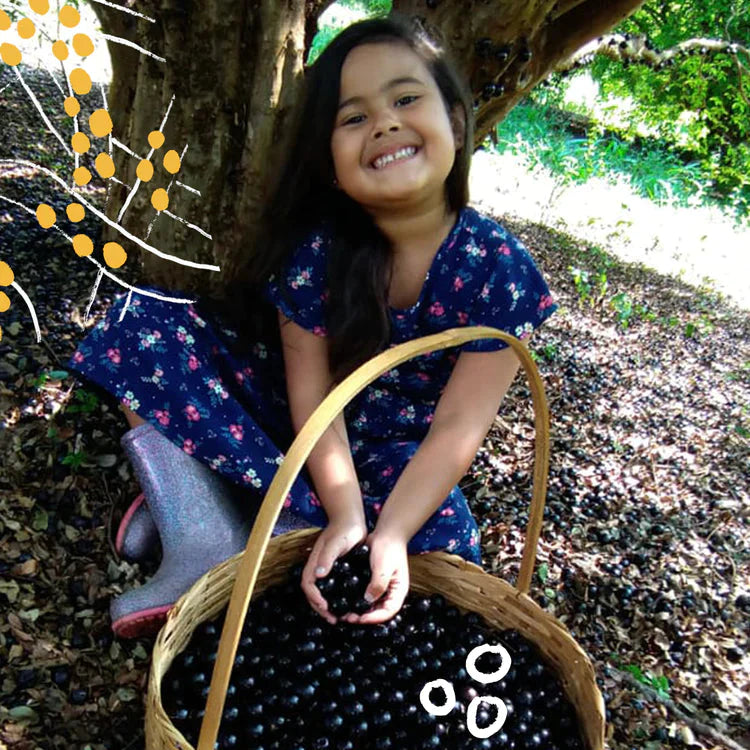
WHAT DO THEY TASTE LIKE?
Their taste and appearance is most often compared to the muscadine grape — and they’re even nicknamed ‘the Brazilian grape’. Jabuticaba berries are both sweet and acidic, with tough, tart skin and a pale, fleshy centre that’s incredibly sweet.
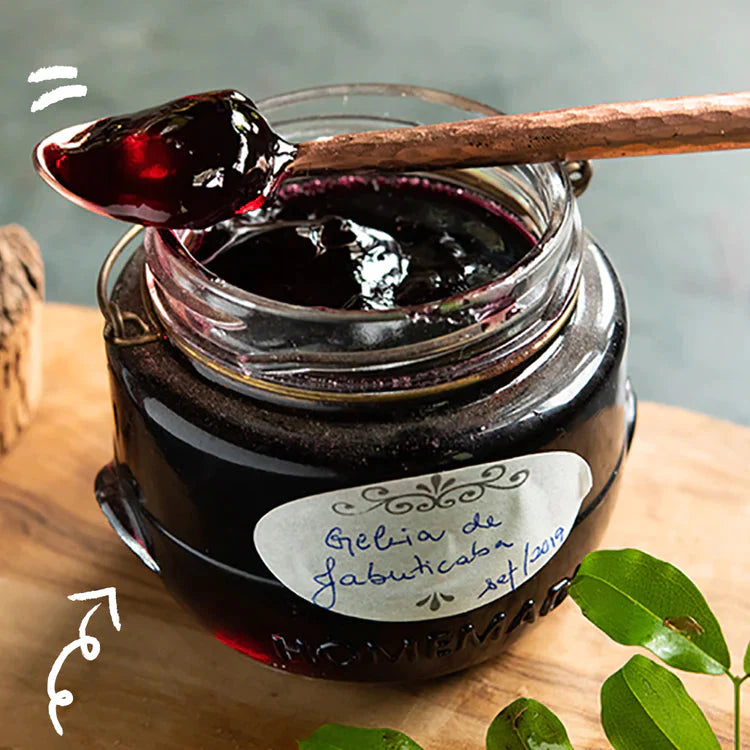
HOW ARE THEY EATEN?
Brazilians prefer to eat them raw and freshly picked. To avoid them going to waste, they’re often turned into jam, jelly, juice, liquor, or added to Brazil’s beloved cocktail, Caipirinha. The berry’s name derives from Tupi — an ancient Brazilian language — and means turtle (jabuti) and land (caba), in a nod to the turtles that once surrounded the area and grazed on the fruit.
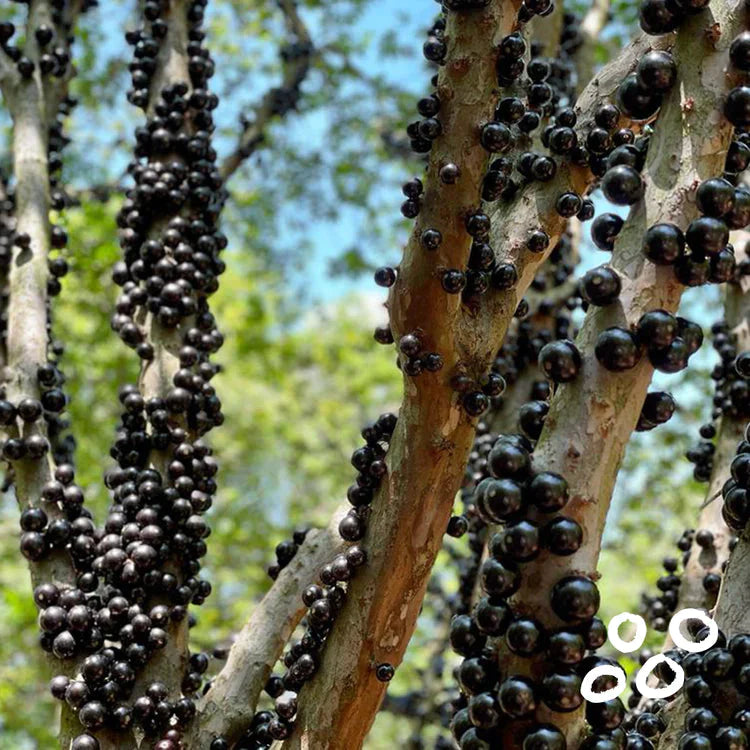
WHAT MAKES THEM SO HEALTHY?
When it comes to the amount of antioxidants per 100g of fruit, jabuticaba berries out-trump blueberries, grapes and even açaí. They also contain vitamins C and E, calcium, iron, potassium and phosphorus, as well as anti-inflammatory properties.
FEATURED IN NATIONAL GEOGRAPHIC
